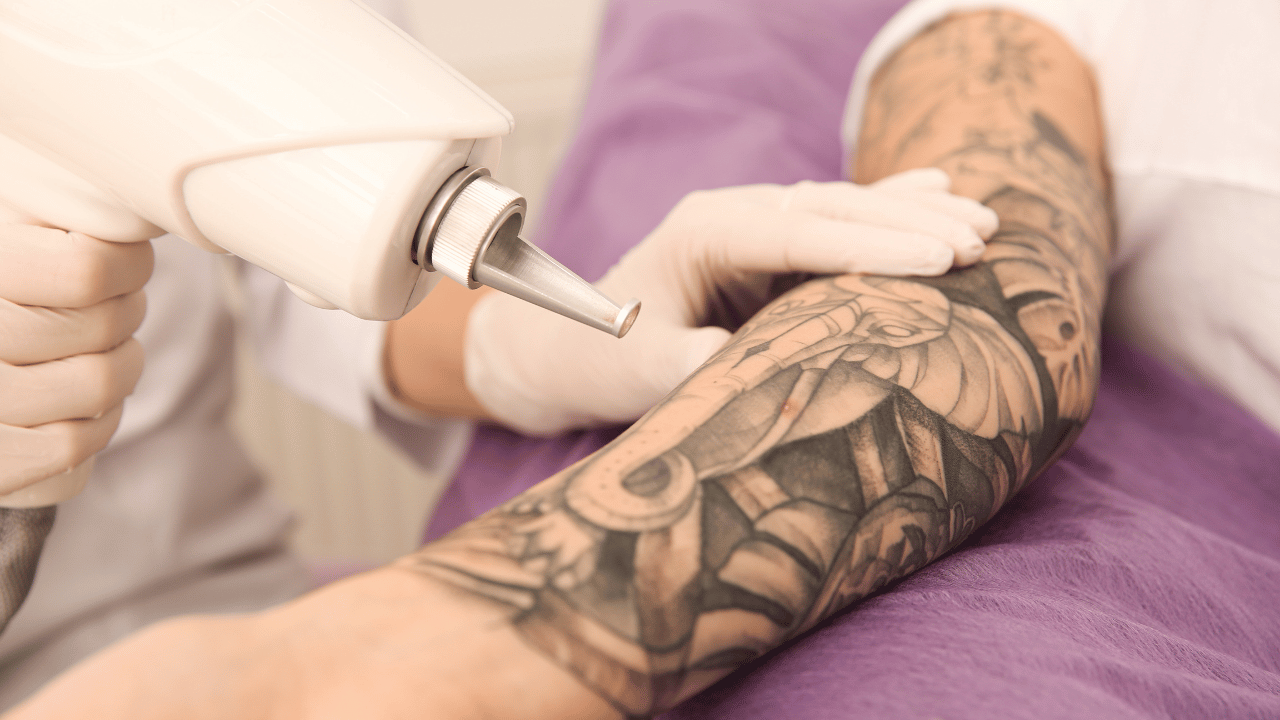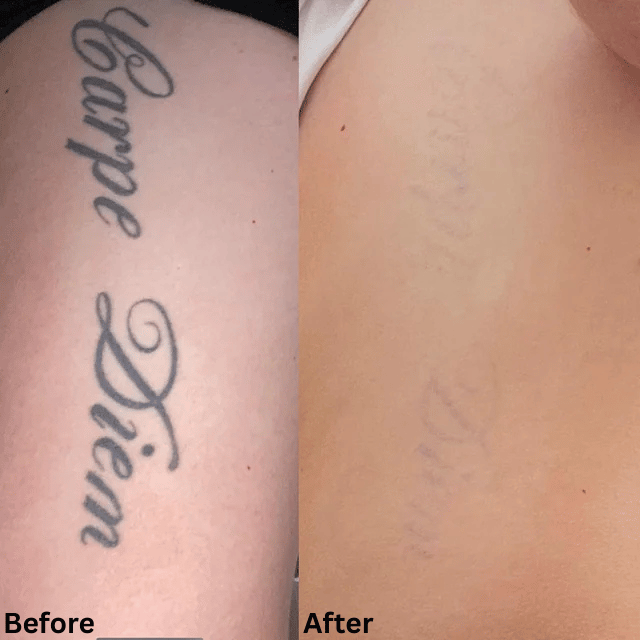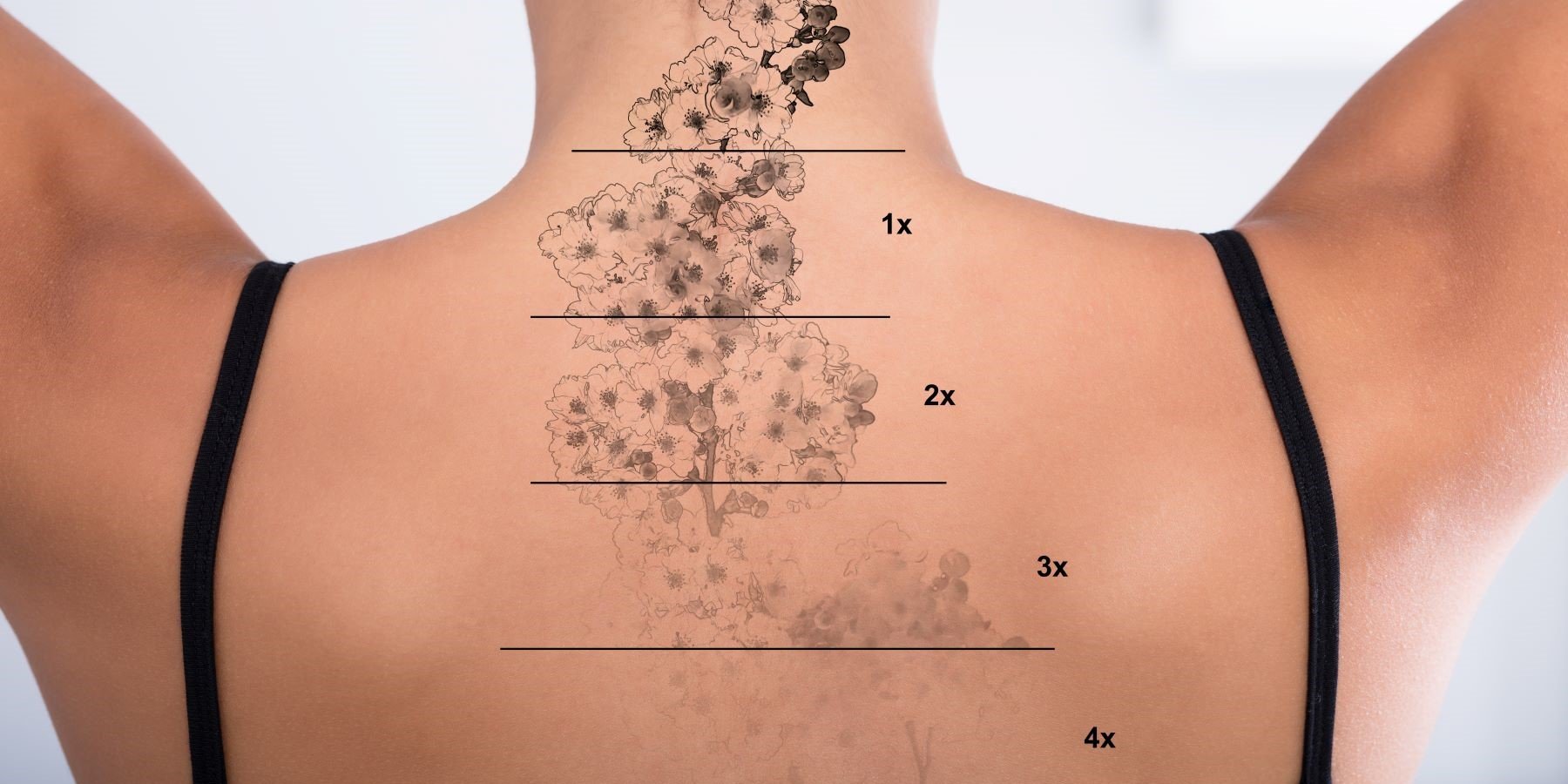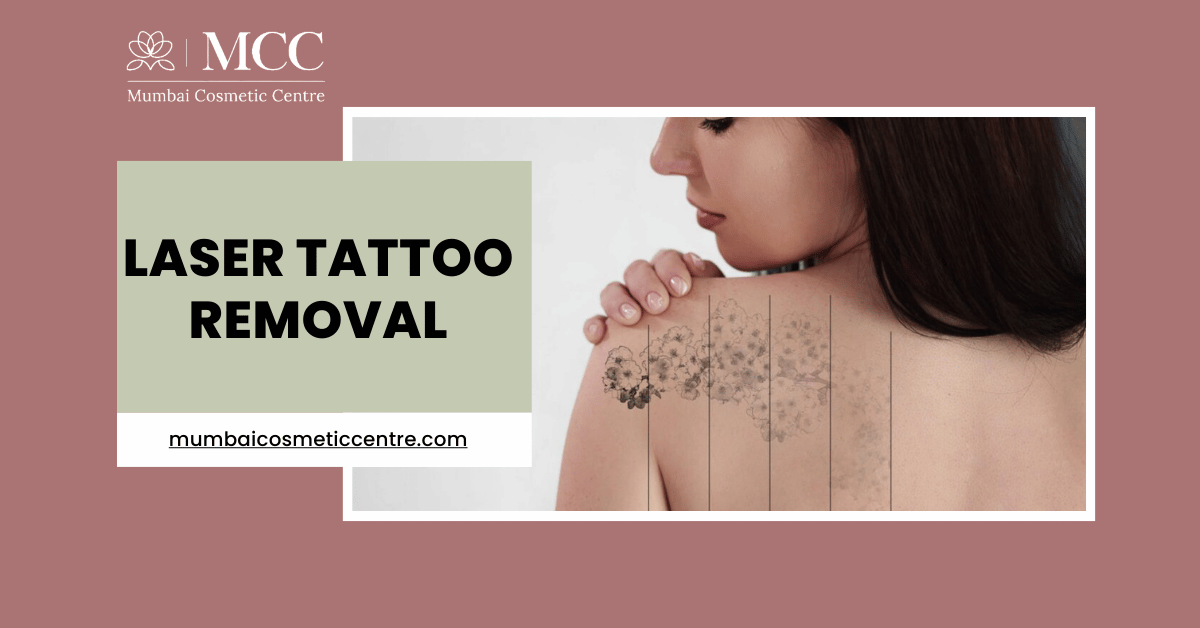Introduction
Tattoos can hold deep personal meaning, but sometimes, life changes, and what was once meaningful becomes something you’d rather forget. Whether it’s an ex’s name, a regretful decision, or simply a shift in style, many people seek tattoo removal for various reasons. Among the many methods available today, laser tattoo removal has become the most popular and effective way to erase unwanted tattoos. In this blog, we’ll explore how laser tattoo removal works, the treatment process, and what you need to know before deciding on this procedure.
The Basics of Laser Tattoo Removal

Laser tattoo removal is a non-invasive procedure that uses high-intensity light beams to break down the ink particles in a tattoo. The laser targets the pigment in the tattoo, shattering it into smaller pieces that are then gradually removed by the body’s immune system. The procedure is performed using a specialized laser, which emits light at a specific wavelength that is absorbed by the tattoo ink.
When the laser energy hits the ink, it causes the pigment to fragment, allowing your body’s white blood cells to absorb and eliminate the particles. Over time, this process lightens and eventually removes the tattoo, although it can take several sessions depending on the tattoo’s size, color, and depth.
Why is it Important to See a Dermatologist for Laser Tattoo Removal?

Laser tattoo removal may seem straightforward, but it’s important to seek treatment from a qualified professional, preferably a dermatologist or a licensed specialist. The reason for this is that the process requires skill, precision, and knowledge of the skin’s anatomy. A dermatologist can ensure that the procedure is carried out safely and effectively, minimizing the risk of scarring, skin damage, and other complications.
Additionally, dermatologists can assess your skin type, tattoo type, and other factors that can affect the outcome of the treatment. They can also offer tailored advice on aftercare to prevent infection and promote optimal healing.
The Tattoo Removal Process
1. Consultation and Assessment
The first step is to schedule a consultation with a qualified specialist. During this appointment, the dermatologist will assess the tattoo, your skin type, and any previous treatments you may have undergone. They’ll also ask about your medical history to ensure you’re a good candidate for laser tattoo removal. The cost of the consultation may vary, but it’s often included in the overall treatment package.
2. Preparing for the Procedure
Before the procedure, the tattooed area will be cleaned and possibly shaved (if necessary). A local anesthetic or numbing cream may be applied to minimize any discomfort during the procedure. Some people may experience a slight stinging or snapping sensation as the laser targets the tattoo. The cost of the treatment generally depends on the size and complexity of the tattoo, with larger tattoos typically requiring more sessions, which can increase the overall cost.
3. The Laser Treatment
The laser is applied to the tattooed area, delivering short pulses of light to break down the ink particles. The treatment time varies depending on the size and location of the tattoo, but it typically lasts anywhere from 15 to 60 minutes. Most patients experience only mild discomfort during the treatment, but this can vary depending on the individual and the location of the tattoo.
4. Post-Treatment Care
After the treatment, you may experience some redness, swelling, or blistering in the treated area. This is normal and usually subsides within a few days. It’s crucial to follow the aftercare instructions provided by the dermatologist, which may include keeping the area clean, avoiding sun exposure, and using ointments to promote healing.
Factors That Affect Tattoo Removal
Several factors can influence how well a tattoo responds to laser removal, including:

1. Tattoo Color
Black ink is the easiest to remove because it absorbs all wavelengths of light. Colored tattoos, especially those with red, green, or blue inks, may require more sessions to break down the pigments. Different lasers are used for different ink colors, so your specialist may use a variety of lasers during the treatment process.
2. Tattoo Age
Older tattoos tend to fade more easily than newer ones. This is because the body has already started to break down the ink over time, making it more receptive to the laser treatment.
3. Skin Type
Your skin type can also affect how well the tattoo removal process works. Individuals with darker skin may require special considerations to avoid damage to the surrounding skin.
4. Depth and Size of the Tattoo
Larger tattoos with deeper ink can take longer to remove and may require more sessions. Shallow tattoos generally respond better to treatment.
Why Choose Mumbai Cosmetic Centre for Tattoo Removal?
At Mumbai Cosmetic Centre, we specialize in providing transformative beauty treatments, including face, hair, skin, IPL, IV therapies, laser procedures, and cosmetic gynecology. We understand how important it is to feel comfortable and confident in your skin, which is why we prioritize your safety and satisfaction in every treatment.
Dr. Shruti Shah, a pioneer in her field, uses the latest technologies to ensure optimal results for every patient. Alongside her expertise in non-surgical procedures like HIFU vaginal tightening, Dr. Shah offers a comprehensive range of gynecological services. Dr. Chetan Shah, a highly respected board-certified anesthesiologist, ensures that all procedures are carried out with precision and care.
If you’re considering laser tattoo removal or any of our other beauty treatments, we invite you to schedule a consultation at Mumbai Cosmetic Centre.
Clinic is conveniently located at:
1st Floor, Milap Apt, Swami Vivekananda Rd, Opp. Milap PVR Cinemas, Malad West, Mumbai, Maharashtra 400064
Phone: +91-7400188399
Email: mccmumbaicosmeticcentre@gmail.com
FAQs
1. Is laser tattoo removal safe?
Yes, when performed by a licensed professional, laser tattoo removal is a safe and effective procedure.
2. How many sessions are needed for tattoo removal?
Most tattoos require 5-10 sessions, depending on factors such as size, color, and age.
3. Does laser tattoo removal hurt?
Some discomfort is normal, but most people describe the sensation as being similar to the snapping of a rubber band.
4. Can all tattoos be removed?
Most tattoos can be removed, but some, particularly those with stubborn colors or deep ink, may take longer to fade.
5. Will I have scarring after laser tattoo removal?
If the procedure is done correctly, scarring is rare. However, following post-treatment care instructions is essential for minimizing risks.
Conclusion
Laser tattoo removal is an effective and popular method for removing unwanted tattoos. With the right professional guidance and multiple sessions, you can significantly lighten or even completely remove a tattoo. It’s important to consult a dermatologist to ensure the best possible outcome and minimize potential side effects.
If you’re ready to remove your tattoo, consider reaching out to Mumbai Cosmetic Centre, where Dr. Shruti Shah and her expert team will guide you through the process. Whether it’s tattoo removal or other cosmetic treatments, we are here to help you achieve your desired results safely and effectively.
